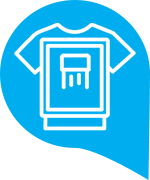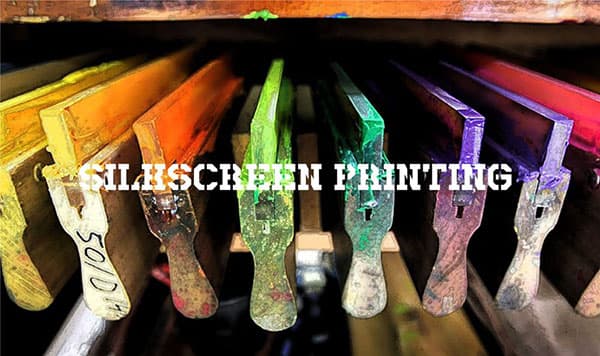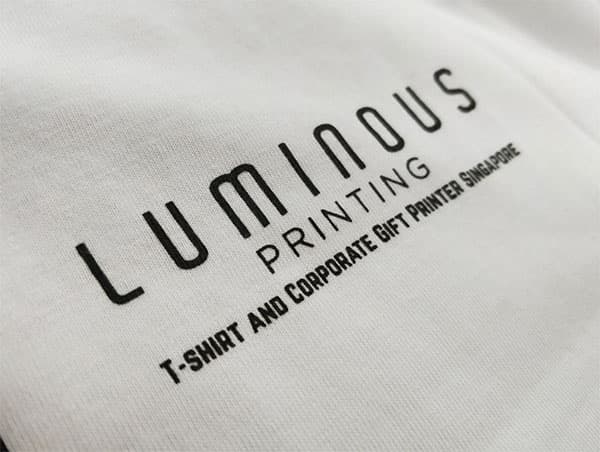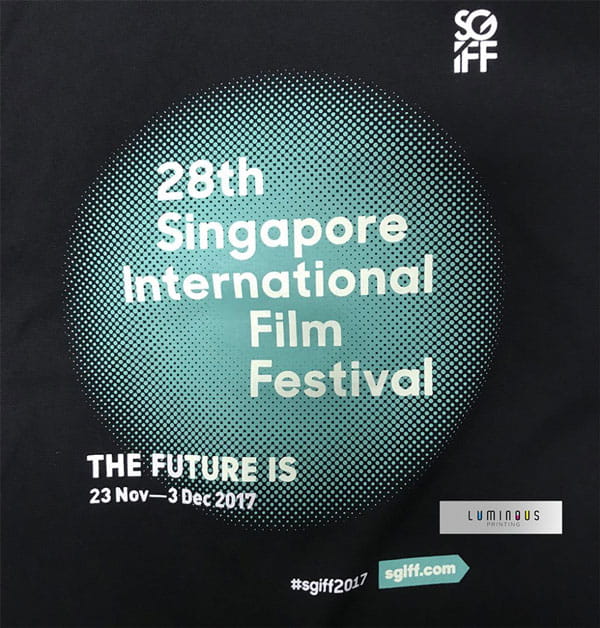 Silkscreen Printing
Silkscreen Printing
Silkscreen printing is pretty much one of the most common and popular printing method on any apparel. Prints using silkscreen are usually long lasting with great presentation of colours; it is more vivid. The method involves the use of stencil to print your design on the garment. Hence, it is what we called as one design for all. Large scale orders of the same design with consideration of the artwork size, this printing will worth every penny of yours.
Silkscreen Printing (Economical Printing method)
About Silkscreen printing – What is this?

Silkscreen printing is pretty much one of the most common and popular printing methods on any apparel. For starters, it could be easily detected on most of the T-shirts in the market nowadays. It is just everywhere, as long as you take closer attention or observe carefully.
Furthermore, for people who are curious, here is some information that you might need to know on how does its functions. The method involves the use of a blocking stencil, in which a mold is created with the design of your choice. The stencil will be placed on the garment to transfer the design onto it by applying pigments. However, prints using silkscreen are usually long-lasting with a great presentation of colors; vivid enough to have your design pops.
This printing will worth every penny of yours with a solid design, clear outlines, and promising colours. Not only that, silkscreen printing is ideal for large-scale orders as it is cheap using one design.

How much is silkscreen printing charges?
Have a thought to create your corporate shirts for your staff or gifts for huge events? Couldn’t opt for better methods of printing for your huge staff or students on a family day or sports day? Or you would just intend to create awareness for your company/ brand but you are on a tight budget? Fret not as silkscreen printing is the best option that you would like to consider.
1- Dimension of the design
2- Numbers colors of the design
3- Quantity of apparel
4- Location of printing
Have you heard about half Toning Silkscreen Printing? When does this method being used?
Toning is applying when your artwork is done with many small dots, and those dots are unable to be printed by using normal silkscreen printing technique. So, half-toning will be a very high resolution of artwork, then the production only able to create a high-quality film positive onto the stencil.
Sample of Half-Toning

What item or apparel can be used for silkscreen?
- Any tshirt material
- Polo shirt material
- Caps
- Hoodies or Jackets
- Short-Sleeve / Long Sleeve Shirts
- Apron (Polyester or Cotton)
- Blank Fabric
- And many more
What are the advantages and disadvantages?
Advantages
- Economical when printing large quantities with one design
- Silkscreen prints are long-lasting
- Prints can be used on multiple items
- Solid and vivid colors produced are durable
Disadvantages
- Printing small quantities is expensive
- Limited color as using more colors will cost more
- Limitation of silkscreen printing with the merging and disappear print of small details, tiny wording or very fine lining
Facts to know – History of Silkscreen Printing
Its is one of the oldest printing methods that you could find. Around 1000 years ago, this type of printing method first began in China. It was slowly introduced throughout Asia, including Japan; whereby the silkscreen printing technique was adopted. The technique is refined by these countries in terms of craftsmanship using paints and blocks for printing.
Slowly but certainly, it made its way to Europe in the late 1700s. However, it is still not widely used by the people just yet as the method was used for printing on expensive wallpapers, silk or other fine fabrics for the rich. Silkscreen printing was only largely known and accepted when it was officially patented.
Want to try doing silkscreen printing on your tee shirt at home? Yes, you can.
This method is best for:
- Economical when printing large quantities with one design
- Silkscreen prints are long lasting
- Prints can be used on multiple items
- Solid and vivid colours produced are durable
Silkscreen printing, also known as screen printing, can be a rewarding and creative way to customize your T-shirts at home. Here's a basic guide to help you get started with silkscreen printing:
Materials Needed:
-
Screen: Choose a screen with an appropriate mesh count for your design. Higher mesh counts are suitable for finer details.
-
Emulsion and Sensitizer: Emulsion is a light-sensitive substance that coats the screen. Mix it with a sensitizer, and apply it evenly on the screen's surface.
-
Squeegee: Used to push the ink through the screen and onto the T-shirt.
-
Ink: Select water-based or solvent-based ink depending on your preference and the fabric of your T-shirt.
-
Design: Create or choose a design for your T-shirt. Ensure it's suitable for screen printing.
-
Light Source: You'll need a darkroom or a controlled space with a light source to expose your screen.
-
T-shirt and Printing Surface: Have your T-shirts ready, and make sure you have a stable surface for printing.
Steps:
-
Prepare Your Design:
- Create or choose a design.
- Convert it to a high-contrast black and white image.
-
Coat the Screen:
- Apply the emulsion mixture evenly on both sides of the screen.
- Let it dry in a dark place.
-
Expose the Design:
- Place the black and white design on the coated screen.
- Expose it to light for the required time, depending on the emulsion and light source.
-
Wash Out the Design:
- Rinse the screen with water.
- The areas covered by your design will wash away, leaving the stencil on the screen.
-
Set Up for Printing:
- Place your T-shirt on the printing surface.
- Position the screen over the shirt.
-
Apply Ink:
- Put a line of ink at the top of the screen.
- Use the squeegee to pull the ink across the screen, forcing it through the stencil onto the T-shirt.
-
Dry the Print:
- Carefully lift the screen to reveal the printed design.
- Allow the ink to air-dry or use a heat source for quicker drying.
-
Cure the Print:
- If using water-based ink, heat-set the print with an iron or heat press to ensure durability.
Tips and Troubleshooting:
- Practice on scrap fabric before printing on your T-shirts.
- Experiment with different mesh counts for varying levels of detail.
- Keep your work area clean for consistent prints.
Remember, silkscreen printing can be a bit of trial and error, so don't be discouraged if your first prints aren't perfect. With practice, you can create unique, personalized T-shirts at home.
FAQs - Silkscreen printing service in Singapore at Luminous Printing:
-
What is silkscreen printing, and how does it differ from other printing methods?
Silkscreen printing, also known as screen printing, is a technique where ink is forced through a fine mesh screen onto a substrate, creating a printed design. Unlike digital printing, silkscreen printing is ideal for larger quantities and offers vibrant, durable prints on various surfaces such as fabric, paper, and plastic.
-
What types of materials can be used for silkscreen printing in Singapore?
Silkscreen printing in Singapore is versatile and can be applied to a wide range of materials, including cotton, polyester, paper, cardboard, metal, glass, and some plastics. It's essential to discuss the specific material requirements with your printer for the best results.
-
Is silkscreen printing suitable for small businesses and individuals, or is it more geared towards larger orders?
While silkscreen printing is known for its efficiency in handling large orders, it is also suitable for smaller quantities. However, it's important to note that set-up costs are involved, making it more cost-effective for larger batches. For small businesses or individuals, digital printing might be a more economical choice for smaller quantities.
-
Can I provide my own design for silkscreen printing, and what file formats are accepted?
Yes, most silkscreen printing services in Singapore welcome custom designs. Preferred file formats typically include high-resolution vector files in formats like Adobe Illustrator (.ai) or scalable vector graphics (.svg). However, it's advisable to check with the printing company for their specific requirements.
-
What factors affect the cost of silkscreen printing in Singapore?
The cost of silkscreen printing depends on various factors, including the number of colors in the design, the size of the print, the type of material, and the quantity ordered. Additionally, the complexity of the design and the need for special inks or finishes may also impact the overall cost.
-
How durable are silkscreen prints, especially on clothing items?
Silkscreen prints are known for their durability, particularly on fabric. With proper care (following recommended washing instructions), silkscreen prints on clothing can withstand regular wear and washing without significant fading or deterioration.
-
Can silkscreen printing be used for promotional products other than apparel?
Yes, silkscreen printing is versatile and can be applied to various promotional products, including tote bags, caps, posters, banners, and more. Discuss your specific promotional product needs with the printing service to ensure compatibility.
-
What is the typical turnaround time for a silkscreen printing order in Singapore?
Turnaround times can vary based on factors such as order size, complexity, and the printer's workload. Generally, it's advisable to inquire about the estimated production time when placing an order, as this can help in planning for events or campaigns.
-
Are eco-friendly or water-based inks available for silkscreen printing in Singapore?
Many silkscreen printing services in Singapore offer eco-friendly options, including water-based inks that are more environmentally friendly than traditional solvent-based inks. If sustainability is a priority for your project, inquire about the availability of such inks.
-
Can silkscreen printing be used for intricate and detailed designs, or is it better suited for simple designs?
Silkscreen printing is suitable for both simple and intricate designs. However, the level of detail that can be achieved may depend on factors such as the mesh count of the screen and the expertise of the printing team. Discuss your design specifics with the printer to ensure the best possible outcome.
